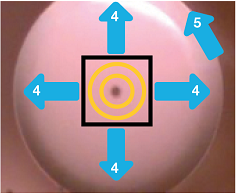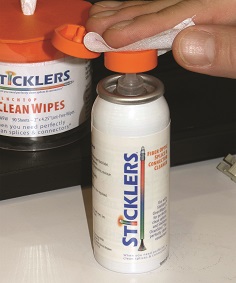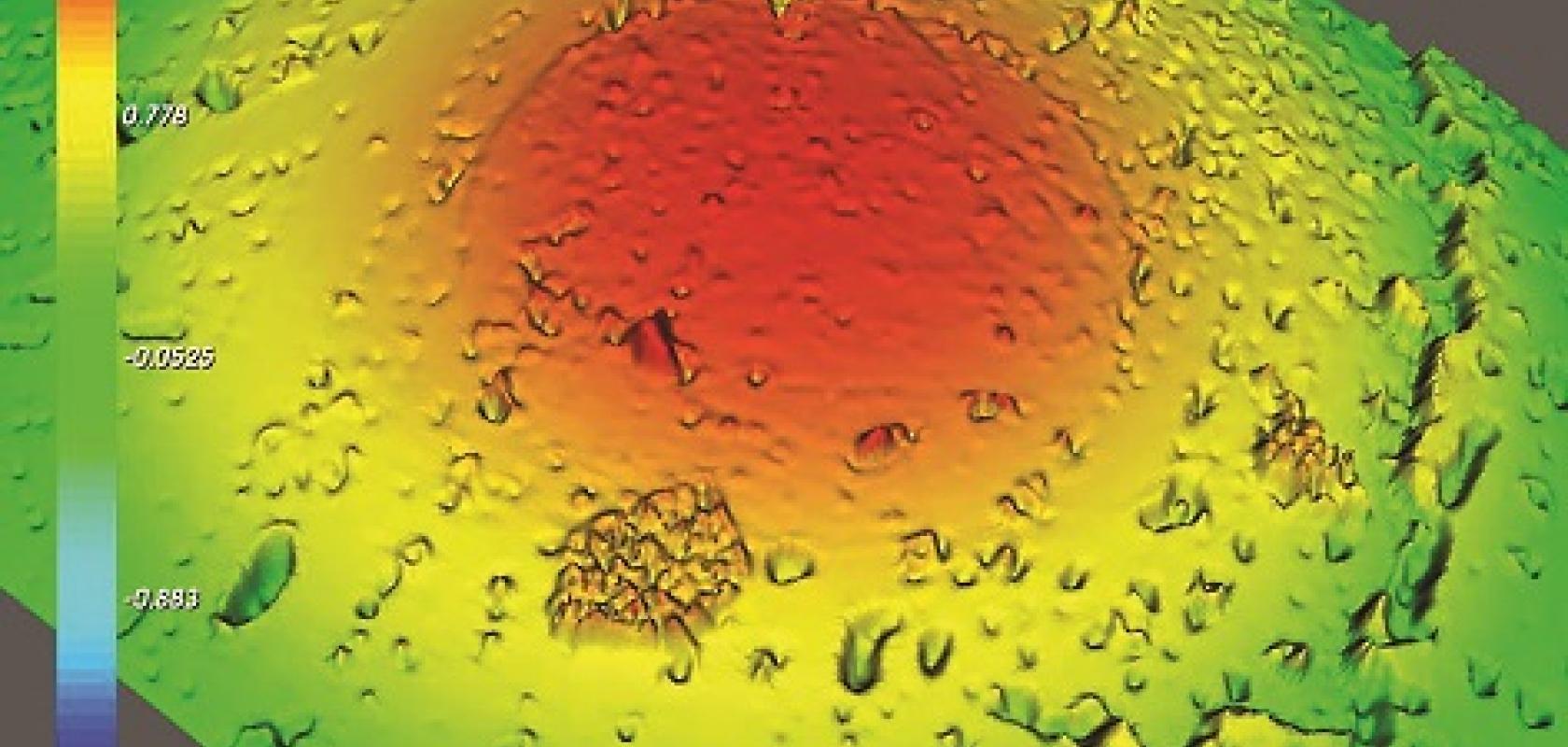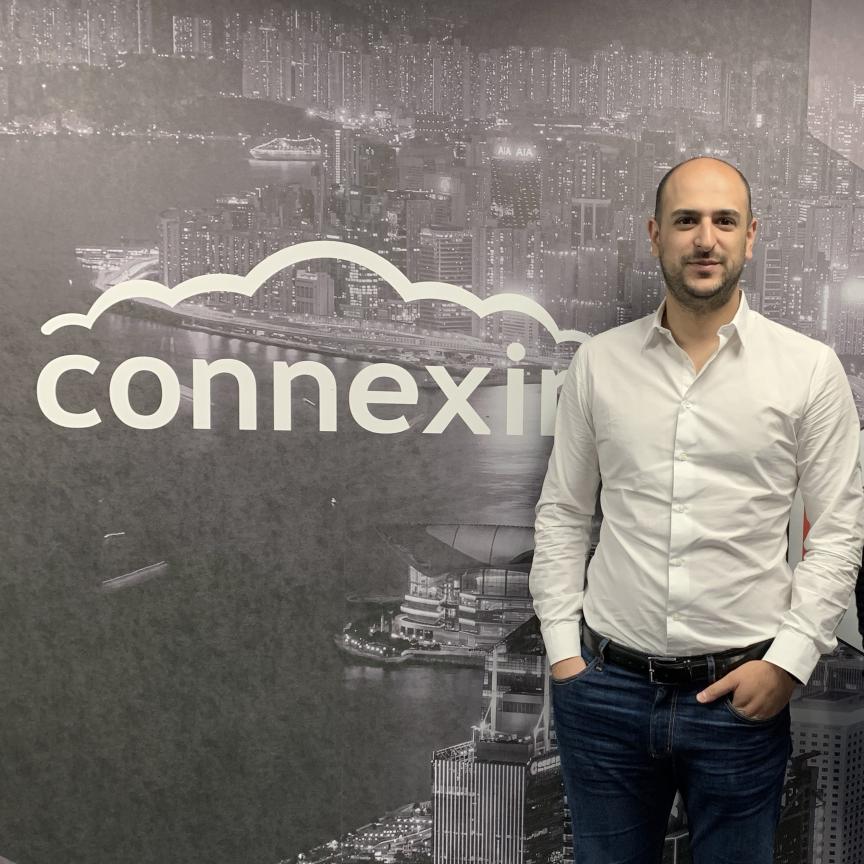We work in a young industry: in just 50 years, fibre capacity has increased astronomically. The theoretical has become practical with astonishing regularity. But for all the advance in speed there remains one weak link: contamination on fibre end faces. In the ‘good old days’ of megabits per second, a contaminated end face was not much of a concern. Today, insertion loss and reflectance problems are major concerns as speeds jump from gigabits-per-second to terabits and beyond.
Better cleaning is the answer, but, with so many product choices, the decision of what to use is often – wrongly – based on convenience or cost. At the end of the day, a better decision should be about the best practice that will ‘future-proof’ each installation. Any connector cleaning procedure should strive to be a ‘do it right the first time’ process. It should be simple, consistent and remove the widest range of contamination. Lastly, it should be the same process for all industry segments.
Proper cleaning will save money. Not too many years ago, I was consulting with a client in California. I observed they had dumped hundreds of patch cords into a 55-gallon drum for disposal, claiming they were defective. I asked permission to take 30 or 40 of them back to my lab. With proper cleaning, only one of those patch cords failed to meet the necessary specifications. Imagine all the profits lost with those unnecessarily scrapped patch cords.
This article will not endorse any specific cleaning product, but rather offer insights on ways to deploy a ‘best practice, application-specific, do-it-right-the-first-time’ process.
Cleaning standards and processes
The base-line standard for inspection and cleaning a fibre-optic connection is IEC 61300-3-35. The International Electrotechnical Commission (IEC) traces its heritage to 1906. Typically, an IEC Standard requires 5-7 years to develop and is in place for about 10 years. In rapidly evolving industries such as ours, these standards become minimum requirements and not the best practices that will future-proof networks in the years ahead.
Our industry is split into two worlds, each working with the same technology but in very different environments. One world is the production line and the other is outside plant. A production line is a tightly-controlled environment. As such, IEC 61300-3-35 is an appropriate standard. But the outside plant world is tumultuous. There simply is no ‘best practice’ standard that is transferable from production lines to outside plant.
For any fibre-optic connection, there are three key questions as we prepare to clean:
First, what is the surface? You will need different tools for a 2.5mm connector, an MT-Type or an expanded-beam system. The only acceptable inspection tool is video inspection. These devices continue to evolve.
Secondly, what is the contamination? Increase your observation awareness! Contamination varies widely from a dusty feed lot to the Amazon Basin and all points in between.
Lastly, what tools and precision cleaning processes do I have that will ensure the connector actually is clean and ready to return the fibre to high capacity service?
There is one significant factor missing: the actual surface of a fibre connector is usually not ‘see-able’. Over the years I have surveyed hundreds of fibre technicians on their practices. I estimate that less than 60 per cent of all fibre connections are inspected. If the technician cannot see the surface it’s impossible to know if the surface actually is clean. To future-proof the network, every cleaning must be followed by inspection. A ‘get it right the first time’ cleaning process should be deployed as a safety net when inspection is not possible.
Five ways to enter the zone
In the figure below, the concentric yellow rings represent a horizontal end face as defined in all current standards. Existing standards term areas inside the box as Zones 1, 2, and 3. The outer-most yellow ring inside the back box is the limit of most video inspection, and at 400x this is approximately a 250–300µm radius from the core. What about the rest of the connection? How do we see it? Is it important to see it? The blue arrows ‘outside the box’ represent the physical area of the end face not seen. I classify this area Zone 4.
 Zones 1 to 4 are limited to the two-dimensional flat surface. But there is a Zone 5: the three-dimensional vertical ferrule. These structures can carry and transfer contamination that will contribute to signal loss. A proper connector cleaning process should include all aspects of the connector, including the vertical ferrule, the alignment sleeve and other ‘inter-surfaces’. This is especially important for water-damaged connectors and is a helpful first step in cleaning.
Zones 1 to 4 are limited to the two-dimensional flat surface. But there is a Zone 5: the three-dimensional vertical ferrule. These structures can carry and transfer contamination that will contribute to signal loss. A proper connector cleaning process should include all aspects of the connector, including the vertical ferrule, the alignment sleeve and other ‘inter-surfaces’. This is especially important for water-damaged connectors and is a helpful first step in cleaning.
Additionally, there are myriad types of contamination. Some are dry, others are fluids and some may be unidentifiable combinations. Existing standards speak primarily of ‘dust’ but there is condensation and ‘transfer contamination’ from hand oils or any number of sources. Fluidic contamination moves and flows, while dry debris tends to stay in place. The three-dimensional nature of end-face contamination can be explored using an interferometer. Interferometers are a useful analytical tool, but are not preferred to standard video inspection.
We have now satisfied the first two components of cleaning with an awareness of ‘what’ and ‘where’. Now we must approach ‘how’ to clean, bearing in mind the limitations of the process. It is not practical to catalogue all potential contamination, or to inspect all the zones of a fibre-optic connection. What is practical is an increased awareness of the deficiencies of existing inspection and cleaning procedures. Understanding those limitations is critical to future-proofing our networks.
Some people are reluctant to improve their processes. A few years ago, I was consulting in Kansas. I had 75 or so technicians in a conference room and we were discussing the best way to clean and inspect. One old-timer challenged me, claiming ‘Ed, I can clean it better on my shirt’. I took the challenge and put his end face on the scope, and sure enough it failed. It was not clean. He piped up from the back of the room, ‘You did it wrong. You gotta clean using the collar of your shirt!’
To that end, there are actually four fibre-optic cleaning techniques:
- The first technique is cleaning without inspection, such as using your shirt (or your collar). This is a poor practice but I understand it exists. If a technician cannot inspect every end face, then they must use high-quality cleaning products to at least have a chance to get consistent results.
- Many companies suggest a ‘dry method’ of cleaning, wiping end faces with a dry paper wipe. While this is not a precision process it can be satisfactory if the contamination is fluidic and you have an inspection scope. It is inadequate for removing dry particulate. Wiping dry moves, but does not remove, contamination. Dry cleaning may also create a static charge that attracts additional debris.
- Then there is the ‘wet-dry’ method. This inevitably deploys too much liquid. The excess liquid may be squeezed into Zone 5 structures only to leach out later, unpredictably. This is not a precision process. In fact, this method – usually promoted with ineffective and inexpensive alcohol, a cellulose wipe and a pump-bottle that brings moisture and contamination into the IPA cleaner – is exactly the opposite of a best practice.
- Lastly, there is the technique defined in Telcordia GR-2923-Core that details the use of a fibre-optic grade cleaning liquid and an integral wiping/drying process. The most prominent proponents of this process can be found in the Sticklers products and at Chemtronics. This is true precision cleaning.
On a side-note, self-cleaning connectors would seem to be a good idea. However, they are expensive and sub-optimal. They cannot accommodate wet-dry cleaning. They offer a limited number of cleaning cycles. Overall, it’s not a guaranteed perfect result. They may evolve and improve in the future.
The following best cleaning process is appropriate for all connectors:
- Always use a fibre-optic grade cleaning fluid. Less fluid is better. Wet a wipe or cleaning stick with the minimal quantity of solvent; less than 0.1ml is optimal.
- Use appropriate wiping materials, cleaning sticks or swabs to obtain perfect results on the first attempt.
- Using the dampened stick or wipe, move the contamination away from the contact zone. (This may also be accomplished with a click-on, push-to-clean tool.)
A few cautions. Do not use a ‘figure-eight’ movement, which can retrace debris over the cleaning path. Do not push too hard, or twist and turn because that can grind debris into the end face. Lastly, never clean by pressing the end face onto a hard surface, or clean in the palm of a sweaty hand or by wrapping a wipe over a dirty finger.
The right tools for the job
When selecting cleaning products, don’t be shy! Demand the ‘product spec sheets’ that detail the product, any incompatible materials and the product’s performance characteristics. Match products to your worst-case scenario to future-proof your cleaning.
 Cleaning sticks: Some thinner swabs, such as the Sticklers CleanStixx, can actually clean the Zone 5 vertical ferrule. This is especially important for storm damaged connectors as a first step in cleaning. In this case, slide the swab tool between the alignment sleeve and the plastic housing to clean the vertical structure. Then, clean the end face normally with the flat end of the clean stick.
Cleaning sticks: Some thinner swabs, such as the Sticklers CleanStixx, can actually clean the Zone 5 vertical ferrule. This is especially important for storm damaged connectors as a first step in cleaning. In this case, slide the swab tool between the alignment sleeve and the plastic housing to clean the vertical structure. Then, clean the end face normally with the flat end of the clean stick.
Push-to-clean tools: These can be effective devices. However, it is easy to contaminate the cleaning ribbon as the tool is inserted into the port. Select only tools that have a long ‘throw’ that is, they pull enough ribbon over the end face that the final cleaning is always performed with fresh, clean material.
Wipes: Wipes are an old technology that have evolved into high-tech helpers. Cheap wipes are worthless. Never choose wipes made from 100 per cent paper (which is wood pulp) – it can shred and leave residues. While 100 per cent polyester is not as absorbent, it may be more expensive and can actually induce a static field. The most efficient and cost-effective wipes are hydro-entangled polyester-cellulose blends and hydro-entangled natural fibres. Certain foam products, often maligned, may be acceptable.
 Liquids: Solvent selection is often controversial. The primary considerations are effectiveness, purity, worker safety and cost. Seek a fluid that works on the widest range of debris and contamination. Non-flammable liquids are safer and easier to transport. Non-refillable packaging will be cleaner and deliver better results. Certain flammable cleaners (not alcohol) are less expensive and may be acceptable for some operations. 99.9 per cent IPA alcohol is no longer an appropriate choice. Alcohol has poor cleaning characteristics (density, viscosity and surface tension). It is also hygroscopic, attracting moisture to itself, which causes residues. The ‘solvency’ of alcohol is weak and limited. It is slow-drying and prone to entrapment in the ferrule. Better technologies are available. One such choice would be any non-flammable, fast-drying precision cleaning fluid. The most popular of these is made from fluorine. This liquid has excellent cleaning characteristics so it cleans very nicely. Since it evaporates quickly no drying is required. It is very safe for people and the environment. Other suppliers recommend aqueous (water-based) cleaning fluids. Aqueous cleaners definitely require a drying process, but some products perform well. Remain open-minded.
Liquids: Solvent selection is often controversial. The primary considerations are effectiveness, purity, worker safety and cost. Seek a fluid that works on the widest range of debris and contamination. Non-flammable liquids are safer and easier to transport. Non-refillable packaging will be cleaner and deliver better results. Certain flammable cleaners (not alcohol) are less expensive and may be acceptable for some operations. 99.9 per cent IPA alcohol is no longer an appropriate choice. Alcohol has poor cleaning characteristics (density, viscosity and surface tension). It is also hygroscopic, attracting moisture to itself, which causes residues. The ‘solvency’ of alcohol is weak and limited. It is slow-drying and prone to entrapment in the ferrule. Better technologies are available. One such choice would be any non-flammable, fast-drying precision cleaning fluid. The most popular of these is made from fluorine. This liquid has excellent cleaning characteristics so it cleans very nicely. Since it evaporates quickly no drying is required. It is very safe for people and the environment. Other suppliers recommend aqueous (water-based) cleaning fluids. Aqueous cleaners definitely require a drying process, but some products perform well. Remain open-minded.
To conclude, the goal of your process should be perfect cleaning on the first try. The ‘first-time cleaning standard’ should be the goal of all designers, installers and network operators. By itself it is the single best practice to future-proof your network.
Remember, fibre cleaning is not simply a ‘product choice’. It is an application-specific ‘process choice’. Cleaning standards for production lines do not easily transfer to field operations. Develop the right procedures for your environment.
Connectors are three-dimensional structures. Awareness of the risks of improper cleaning techniques is critical as post-inspection failures will result. Video inspection is strongly recommended for every connector, every time. Consider instruments with high resolution and wide field of view.
We also need re-training of our field technicians to eliminate the myths and misunderstandings of cleaning. This is a long-term project that needs to start now.
Automatic contamination detection is in its infancy and will continue to advance to characterise contamination better and usefully to predict network performance. Self-cleaning connectors may also evolve. Until that time network owners, managers, and installers should select a best practice that considers their worst case contamination to future-proof their network.
- Ed Forrest is an expert and author of several books on fibre-optic cleaning, now retired. Visit his website at www.fiberopticprecisioncleaning.com.


